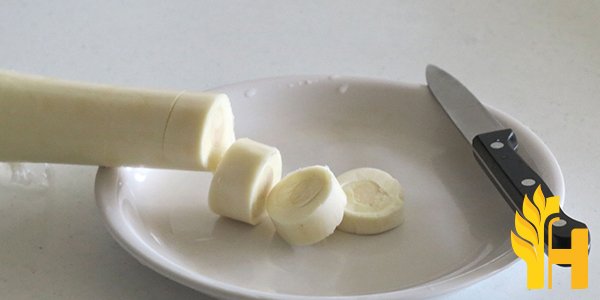Palm Heart price

Where to buy and sell Palm Heart, lowest (cheapest) and highest price.
check offers buy sell Palm HeartToday price for Palm HeartPalm Heart wholesale prices 2022
The Current commodity price of Palm Heart per kg, pound in the world in the global markets
palm heart
Price range: 8.86 - 10.86 BRL / pack | Market: São Paulo Wholesale Markets | Date: 2022-06-08
palm heart
Price range: 8.86 - 10.86 BRL / pack | Market: São Paulo Wholesale Markets | Date: 2022-06-06
palm heart
Price range: 8.86 - 10.86 BRL / pack | Market: São Paulo Wholesale Markets | Date: 2022-06-03
palm heart
Price range: 8.86 - 10.86 BRL / pack | Market: São Paulo Wholesale Markets | Date: 2022-06-01
palm heart
Price range: 8.86 - 10.86 BRL / pack | Market: São Paulo Wholesale Markets | Date: 2022-05-30
Palm Heart
Palm heart, or palmito, is the heart of a palm tree. It is a tender, white fleshy part of the trunk that is often eaten as a vegetable. Palm hearts are a common ingredient in Brazilian and Peruvian cuisine. Palm hearts can be harvested from several different types of palm trees, but the most common variety used for food is the Açaí palm. The heart of this tree is white and surrounded by a thick, fibrous husk. To remove the palm heart, the tree must be cut down at the trunk and the husk removed. The heart can then be cooked in a variety of ways. Palm hearts are a good source of vitamins and minerals, including potassium, magnesium, and iron. They are also a good source of dietary fiber. Palm hearts can be eaten raw, cooked, or canned. When cooked, they have a mild flavor and a firm texture. Canned palm hearts are available in most grocery stores. They are typically packed in water or brine and can be eaten straight from the can. Palm hearts can also be cooked before eating. They can be boiled, steamed, grilled, or roasted. Palm heart production typically involves the removal of the growing tip of the palm tree. This process is known as "topping." Once the tree has been topped, the remaining trunk is cut into sections and the heart of each section is removed. The hearts are then cleaned, trimmed, and canned. The removal of the growing tip of the palm tree is the first step in palm heart production. This process, known as "topping," allows for the Hearts to be harvested from the tree. Topping also stimulates lateral growth, which increases the number of hearts that can be harvested from a single tree. After the tree has been topped, the remaining trunk is cut into sections and the heart of each section is removed. The hearts are then cleaned, trimmed, and canned. Palm heart production typically yields two to three cans per tree. Palm hearts are a valuable source of nutrition and can be used in a variety of dishes. They are often used as a substitute for meat in vegetarian dishes or as an addition to soups, stews, and salads. Palm hearts are also a popular ingredient in Latin American cuisine. Palm hearts come from a variety of palm trees, but the most common variety used for hearts is the African oil palm. The trees are grown in plantations, and the hearts are harvested from wild trees. The hearts are then canned or frozen for export. The majority of palm heart production takes place in Brazil, which is responsible for about 60% of the world's total production. Other major producers include Colombia, Ecuador, Costa Rica, and Honduras. In Brazil, palm hearts are often used in salads, soups, and stews. They are also a popular ingredient in vegan dishes. In Colombia, they are commonly used in ceviche, a dish made with raw fish that is marinated in citrus juice. Ecuador is another major producer of palm hearts, and they are often used in soups and stews. Costa Rica also produces a significant amount of palm hearts, which are used in many different dishes. Honduras is the smallest producer of palm hearts, but they are still used in many different dishes. Palm hearts are a popular ingredient in Latin American cuisine and can be found in many different restaurants.Global palm hearts production
According to the Food and Agriculture Organization of the United Nations (FAO), global production of palm hearts is estimated at around 1.7 million metric tons per year. The vast majority of this production takes place in South America, where Brazil is by far the largest producer, accounting for nearly 60% of total output. Other major producers include Colombia, Peru, and Ecuador. There is a growing demand for palm hearts globally as more people learn about their nutritional value and culinary versatility. Palm hearts are an excellent source of vitamins A and C, potassium, and fiber. They can be eaten raw, cooked, or canned, and can be used in a variety of dishes including salads, soups, and stews.Download our new
Husfarm App
Stay up to date with the current prieces of agricultural products all over the world.
Do you want to sell agricultural products?
Are you an Agricultural processor looking for high-quality products to buy?
Post an ad for FREE!
